The NZXT Manta mITX Case Review
by E. Fylladitakis on June 16, 2016 9:00 AM EST- Posted in
- Cases/Cooling/PSUs
- Mini ITX
- NZXT
- Case
The Exterior of the NZXT Manta
With a postmodern design sporting curved panels and smooth surfaces, the NZXT Manta is designed to stand out from the crowd. As we will see in the following sections, the curved panels are not just for show, adding to the functionality of the case. However, they also increase the width of an already significantly large Mini-ITX case. Measuring 42.6 cm tall, 24.5 cm wide and 45 cm deep (16.8 × 9.7 × 17.7 in), resulting to a volume of 47 liters, the Manta is massive for a Mini-ITX case. It is just 3% smaller than the Zalman Z9 Neo, a full ATX case, and nearly 60% larger than the Cougar QBX, which also is a tower Mini-ITX case. NZXT clearly was not very concerned about making the Manta compact, only to have a high performance gaming tower reduced down to Mini-ITX motherboard dimensions.
We received the black version of the Manta with a windowed side panel. NZXT also offers white and windowless versions. The satin black paint is very smooth to the touch and slightly resistant to fingermarks. On the other hand, the glossy acrylic window that NZXT installed is highly reflective, making it almost impossible to see inside the Manta from a large angle or if the lighting inside the case is poor. The “rainbow” effect seen in some of our pictures is caused by the camera’s polarizing filter, which is unsuccessfully trying to filter all of the lighting reflected by the acrylic panel.
11.2oz soda can inserted as a size reference.
The front panel of the Manta is entirely plain. There are no external drive bays, no buttons and no ports to be found on it. NZXT is even supplying their own company logo with the case’s bundle, allowing the users to choose where (and if) they want it adhered.
In order to reach the intake fan filter, the front panel needs to be removed. This is an easy task, as the panel can come off by simply pulling it from its bottom. The intake filter is a simple nylon filter that cannot stop small particles but can be easily cleaned and reused any number of times.
A closer look in between the side panels and the main body of the case reveals vents, which explains where the front intake fans draw air in from and where the air pushed by the top exhaust fans goes, as there are no other visible openings on the main panels of the case. This approach however undoubtedly adds a significant amount of air flow resistance that can adversely impact the performance of the cooling fans.
The front I/O ports and buttons can be found at the top panel. A large power on button can be seen to the left side of the panel, while two USB 3.0 ports and 3.5mm audio jacks have been installed to the right side of the panel. There is no door or cover for the USB/audio ports.
A look at the rear of the NZXT Manta reveals the presence of a 120 mm exhaust fan, which also hints that the case is just a shorter version of a gaming tower system. NZXT placed the PSU compartment at the bottom of the case.
The NZXT Manta stands on two very wide U-shaped legs. Four long anti-slip rubber pads keep the Manta from slipping on virtually any surface. A nylon filter can be seen covering the PSU intake, which can be removed from the back of the case.


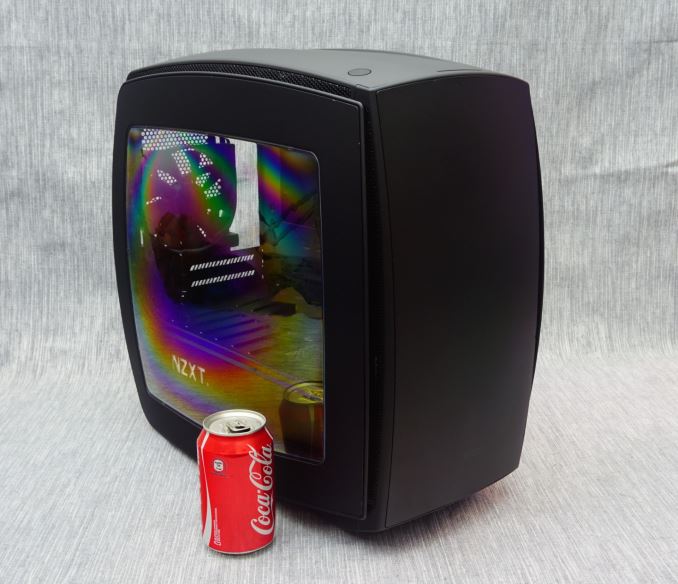
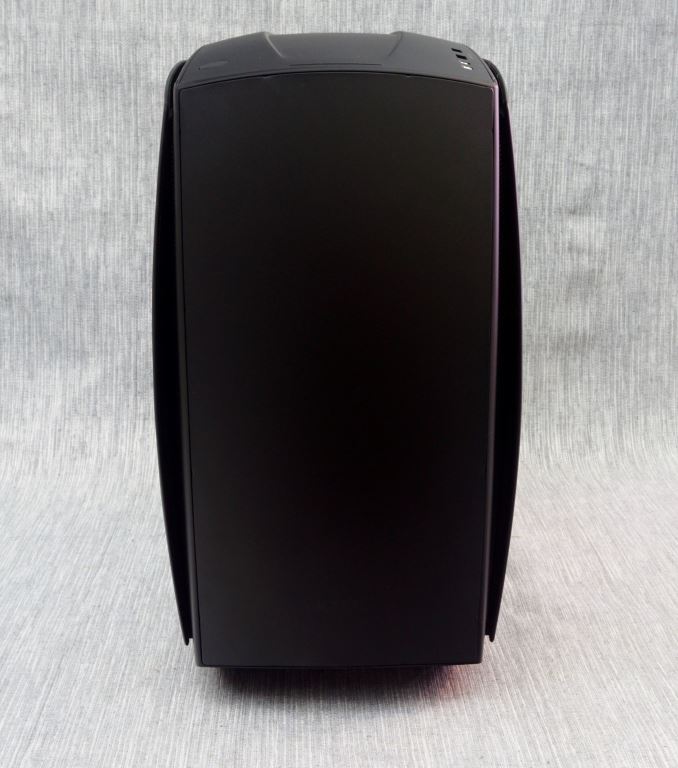
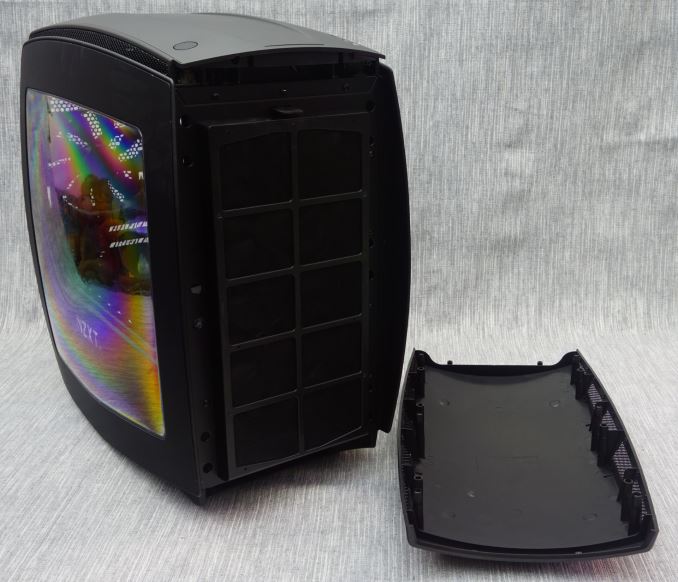
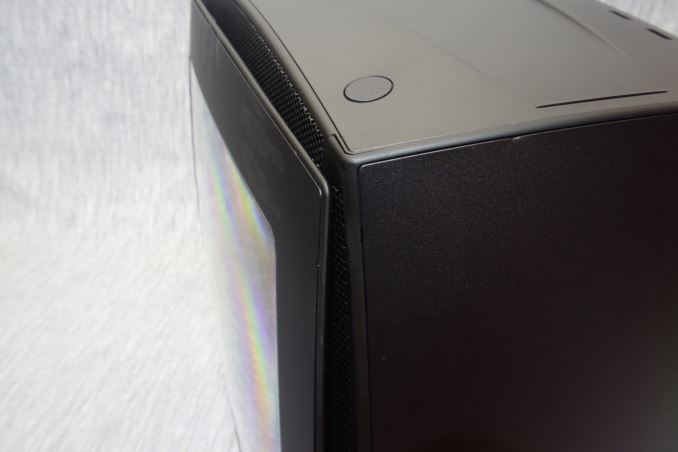

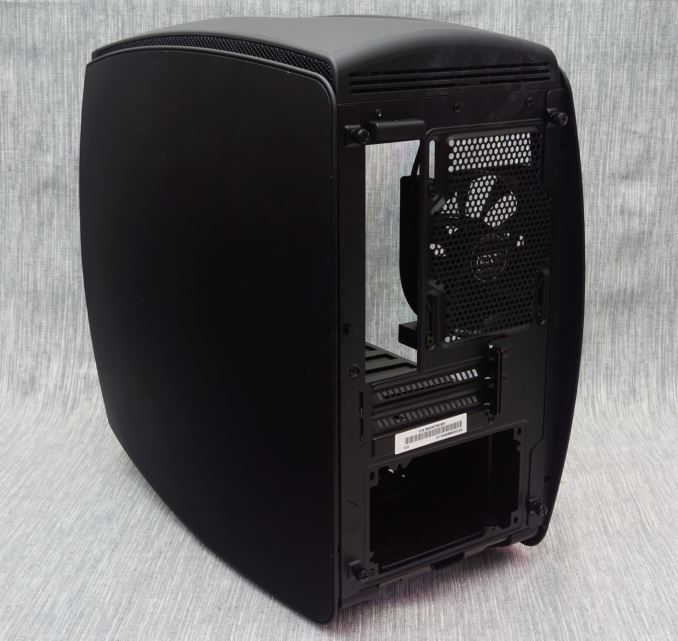
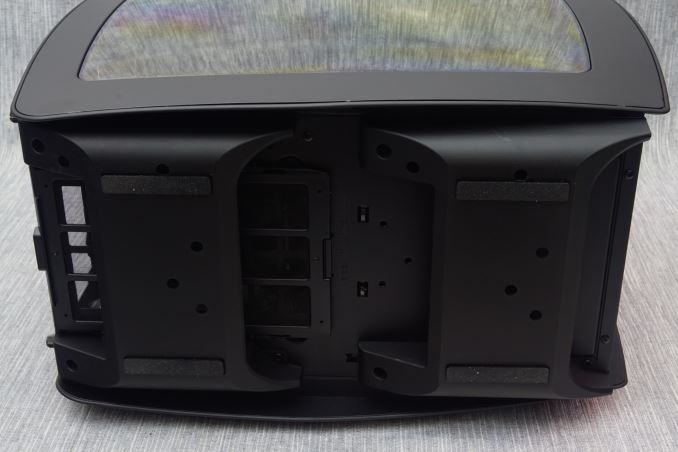








48 Comments
View All Comments
Connoisseur - Thursday, June 16, 2016 - link
Exactly what I care about for my next build, which will be a mini-itx. Was looking at ncase m1 as it's definitely the most compact and clean-looking around but a little concerned about the lack of user-friendliness. Every build video I've seen seems like an exercise in putting together a 3d jigsaw puzzle.Ideally I'd like all of the items you mentioned plus fairly easy user access and cable management but I know the cases start to get larger at that point.
Connoisseur - Thursday, June 16, 2016 - link
Also, agree on the benchmarking. mini-ITX shouldn't be rated together since the internal volumes vary drastically. There should be a noise and temperature benchmark where they assess the temps at a given noise level (something similar to what SPCR does) accounting for a high performance vid card.Samus - Thursday, June 16, 2016 - link
The ncase m1 is awesome. It is an oldie, just like the Silverstone FT03-mini, and it seems itx cases since have lost their sole purpose of the requirements you outlined. I think a minimalistic design with silent operation and as compact internal volume as possible are the key goals, while still fitting a 10.5" video card, even if an SFX PSU is required.Major_Kusanagi - Thursday, June 16, 2016 - link
No offense, but don't lump every enthusiast into your viewpoint. I for one love my fairly recent Manta build (seen here: http://i.imgur.com/xJh9owx.jpg )which fits my needs perfectly.kyuu - Saturday, June 18, 2016 - link
Very nice looking build. Kudos.Drumsticks - Friday, June 17, 2016 - link
Personally, I've got a Corsair Obsidian 250D with a 240mm radiator running a 4.7 GHz i5-4670k. I have an ancient 7850 that is about to get replaced, but I'm pretty happy with the size, capabilities, and performance of my rig. It's not the smallest thing (the ncase m1 you mentioned is probably half the size), but it's definitely pretty easy to carry under one arm, which is really all I need from my mITX.While I agree that there is a need (and not an insignificant one) for the smallest case you can get, stuff the size of my case do fine, imo. Granted, the Manta in question is pretty big as far as I understand, but the thing I like about my system is I can fit essentially a full PC with no compromises (barring a single PCI-e slot inherent to ITX which is a given) and still manage a small build with good airflow.
kepstin - Thursday, June 16, 2016 - link
I'll be honest, I was initially wondering why the photographer was using a fish-eye lens to take photos of this case... that's a pretty unusual and bulky look for a PC case.ingwe - Thursday, June 16, 2016 - link
I thought the same thing. Very...unique...zodiacfml - Saturday, June 18, 2016 - link
They probably have a small room to do the product photography.dsraa - Thursday, June 16, 2016 - link
16 inches tall is as tall as ATX Mid-tower, what's the point? It's a wierd shape too.....complete fail.